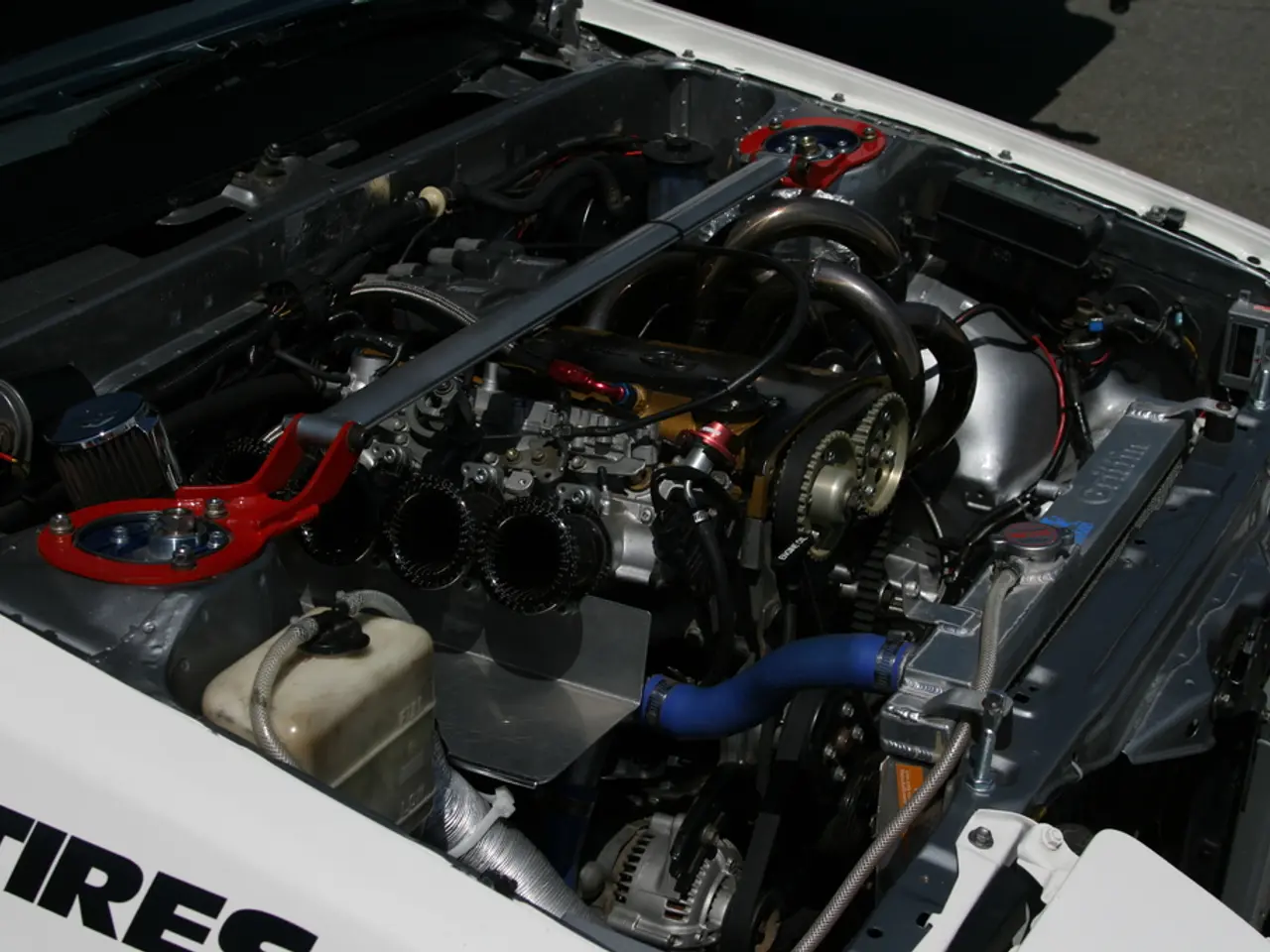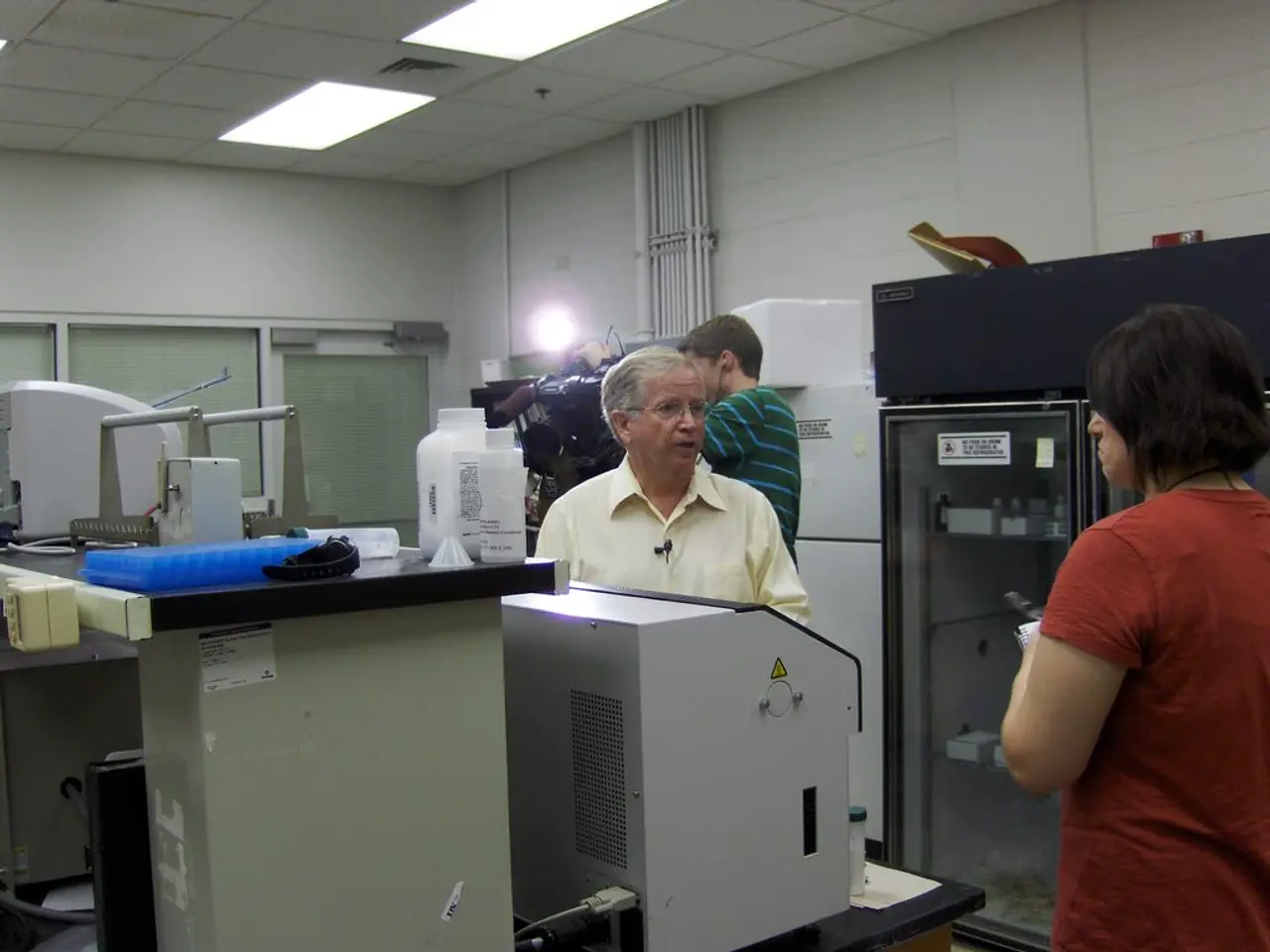LG Energy Solution Reports a 152% surge in earnings, primarily driven by positive sales in the United States.
In a strategic move influenced by the growing preference for local battery supply and the push for stable operations in North America, LG Energy Solution (LGES) has made significant strides in its growth trajectory.
The South Korean battery giant has responded to this trend by initiating production at a new energy storage system (ESS) battery facility in North America and focusing on expanding its ESS business there. This move aligns with recent policy shifts and market demands favouring local manufacturing, particularly amidst rising regulatory barriers for foreign suppliers without established local footprints.
Despite an anticipated near-term slowdown in electric vehicle (EV) demand due to U.S. tariffs and the expiration of federal EV subsidies, LGES achieved a strong operating profit in Q2 2025. The company's success was supported by product mix improvements and cost efficiency, as well as benefits from North American production incentives that bolster profitability.
Looking forward, LGES plans to leverage the growing ESS market, which is becoming increasingly important due to renewable energy projects and AI-driven data centers in the U.S. The U.S. Inflation Reduction Act further incentivizes a shift away from Chinese batteries, favouring suppliers like LG with local production and proven operational stability.
In summary, LGES' strategic responses have helped it sustain strong growth and shape future plans emphasizing North American localization and diversification beyond EV batteries into energy storage systems. The company aims to reach 17 gigawatt-hours capacity by the end of this year and expand to 30 gigawatt-hours by 2026 by converting EV production lines to energy storage system lines.
Moreover, LGES has begun mass production of LFP-based long pouch cells for energy storage systems at its Michigan facility in the US. To target the expanding European market for mid- to low-priced EVs, LG Energy Solution is preparing to mass-produce high-voltage mid-nickel and lithium iron phosphate cells at its Poland plant. LFP products are set to boost cost-competitiveness by incorporating advanced manufacturing methods, including a solvent-free dry electrode process and fast-charging technologies, at the Poland plant.
The company has also secured orders exceeding 50 gigawatt-hours from global energy firms for its energy storage systems. LGES is collaborating with General Motors to develop lithium manganese-rich prismatic cells for their next-generation EVs in 2028.
LGES' strategic focus on North America is further bolstered by the potential benefits of the new "prohibited foreign entity" regulations, part of the One Big Beautiful Bills Act, which could restrict energy companies influenced by Chinese firms from receiving tax credits when investing in the US.
These strategic moves have positioned LG Energy Solution well for long-term growth, fueled by the ESS market and autonomous-driving advancements. The company's head of the business strategy division, Lee Yeon-hee, stated that the new PFE procurement requirements are more relaxed than the foreign entity of concern requirements under the IRA, offering an opportunity to optimize the US supply chain.
However, the decline in sales revenue by 9.7 percent, amounting to 5.6 trillion won, was primarily due to decreased purchases from automakers outside of North America, resulting from increased policy volatility, particularly concerning US tariffs. Despite this, LGES' operating profit surged 152 percent to 492.2 billion won in Q2 2025.
In conclusion, LG Energy Solution's strategic focus on North America and expansion into energy storage systems is set to drive its growth in the coming years, despite temporary market slowdowns and policy uncertainties. The company's commitment to local production, cost-effective supply chains, and technological innovation positions it well to capitalize on the growing demand for energy storage solutions.
References: [1] LG Energy Solution Q2 2025 Earnings Release [2] LG Energy Solution North American Expansion Press Release [3] U.S. Inflation Reduction Act Impact on LG Energy Solution Analysis
- LG Energy Solution (LGES) has planned to expand its Energy Storage System (ESS) business in North America, not only focusing on electric vehicle (EV) batteries but also tapping into the market potential of renewable energy projects and AI-driven data centers, thus aligning with the growing trends in the finance, technology, and industry sectors.
- With the U.S. Inflation Reduction Act encouraging a shift away from Chinese batteries and favoring suppliers with local production and proven operational stability, LGES' production of LFP-based long pouch cells for energy storage systems at its Michigan facility and the collaboration with General Motors to develop lithium manganese-rich prismatic cells for their next-generation EVs in 2028 demonstrate its strategic positioning in the finance, technology, and industry, particularly within North America.




